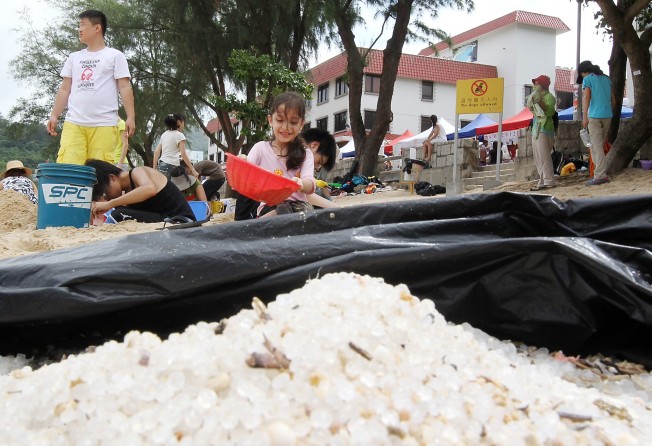Hong Kong’s love of plastic is not just choking landfills, it’s a threat to life

Microplastics, small pieces of plastic of less than 5mm, are a growing threat to human health and marine ecosystems. They may be directly added as microplastics, as nurdles or microbeads – the 2012 Sinopec plastic pellet (nurdle) spill – or may be fragmented from macroplastics, which break into smaller pieces in the ocean environment due to bonds in the plastic being weakened by UV rays and subsequently broken apart by wave action.
Microplastics are understudied. While they are known to adsorb persistent organic pollutants (POPs), which are then consumed by – and accumulate in – organisms up the food chain, ending with humans, their long-term health effects on humans are still unknown. Microplastics pollution was underestimated. High concentrations of microplastics have been found in organisms like fish, mussels and sea cucumbers. A Ghent University study estimated the seafood consumer ingests up to 11,000 tiny pieces of plastics annually, with unknown consequences – they were only discovered in 1972.
The Education University of Hong Kong (formerly Hong Kong Institute of Education) found that the average amount of microplastics on beaches in Hong Kong was 5,600 pieces per square metre – 50 per cent higher than similar study results in South Korea. The same study found a close association between expanded polystyrene microplastics and larger polystyrene containers, demonstrating two things. Firstly, fragmentation plays a significant role in the overall quantity of microplastics, and, secondly, Hong Kong’s high use of plastic, be it macro- or microplastic, eventually contributes to the high level of microplastic contamination on our shores.
There is hope; the 2012 Sinopec plastic pellet spill mobilised many citizens, who sacrificed their time and energy to clean up affected beaches. If people were willing to clean up the pellets, then focusing our combined energy on reducing our plastic use would net a greater benefit for Hong Kong’s marine environment. Such a vigilant spirit is necessary to tackle our plastic overuse problem at the source – consumer habits.
In 2015, Hong Kong disposed of over 2,000 tonnes of waste plastic in landfills daily. Examples of reducing plastic use abound – avoiding single-use plastic items such as cutlery; using a reusable water bottle or food container; refusing plastic bags at food establishments; and, increasing the level of recycling you, as an individual, partake in. Over time, these positive changes will impact the way you feel about how you consume – less wasteful, more thoughtful, and environmentally positive.
Sion Griffiths, Friends of the Earth (HK)